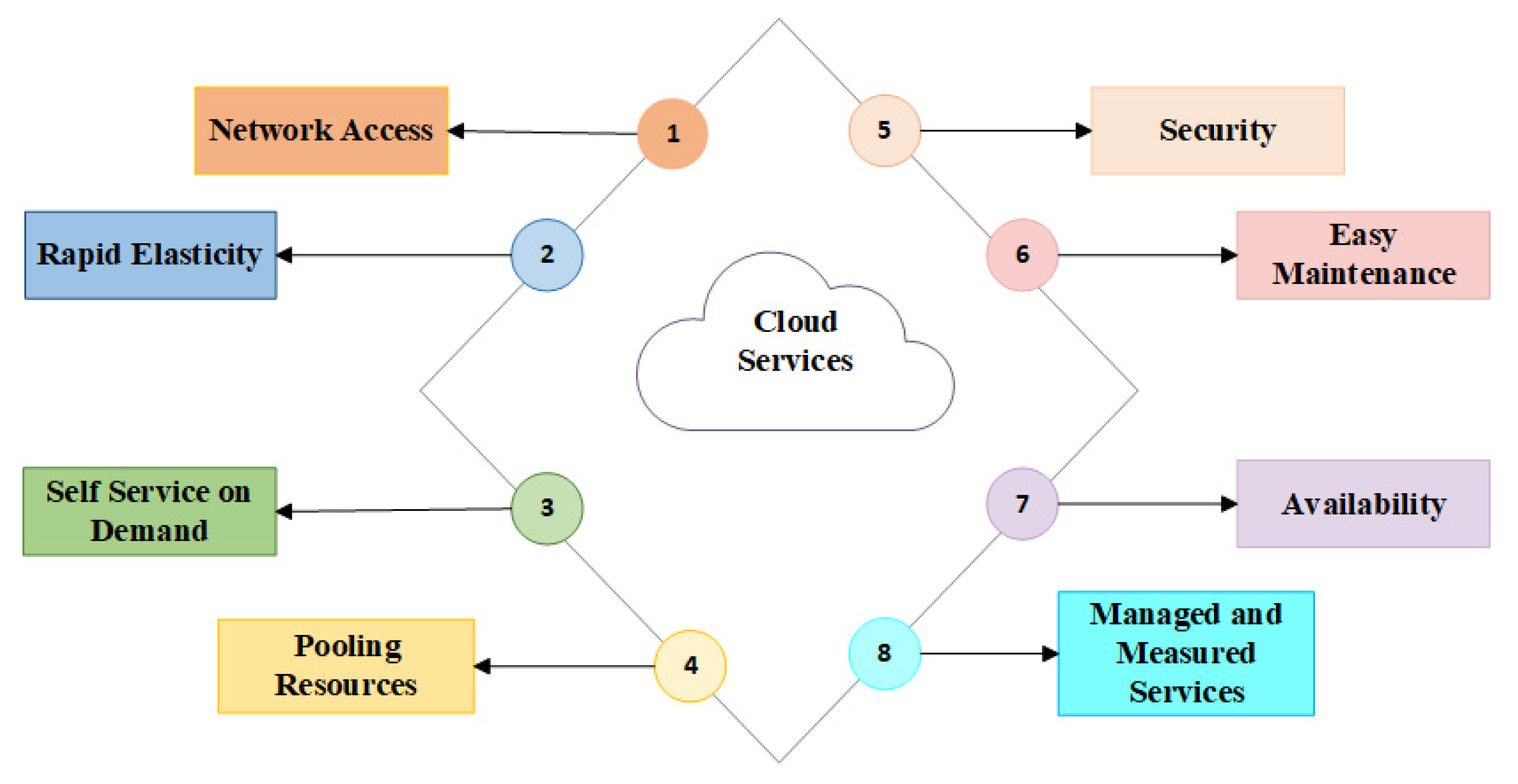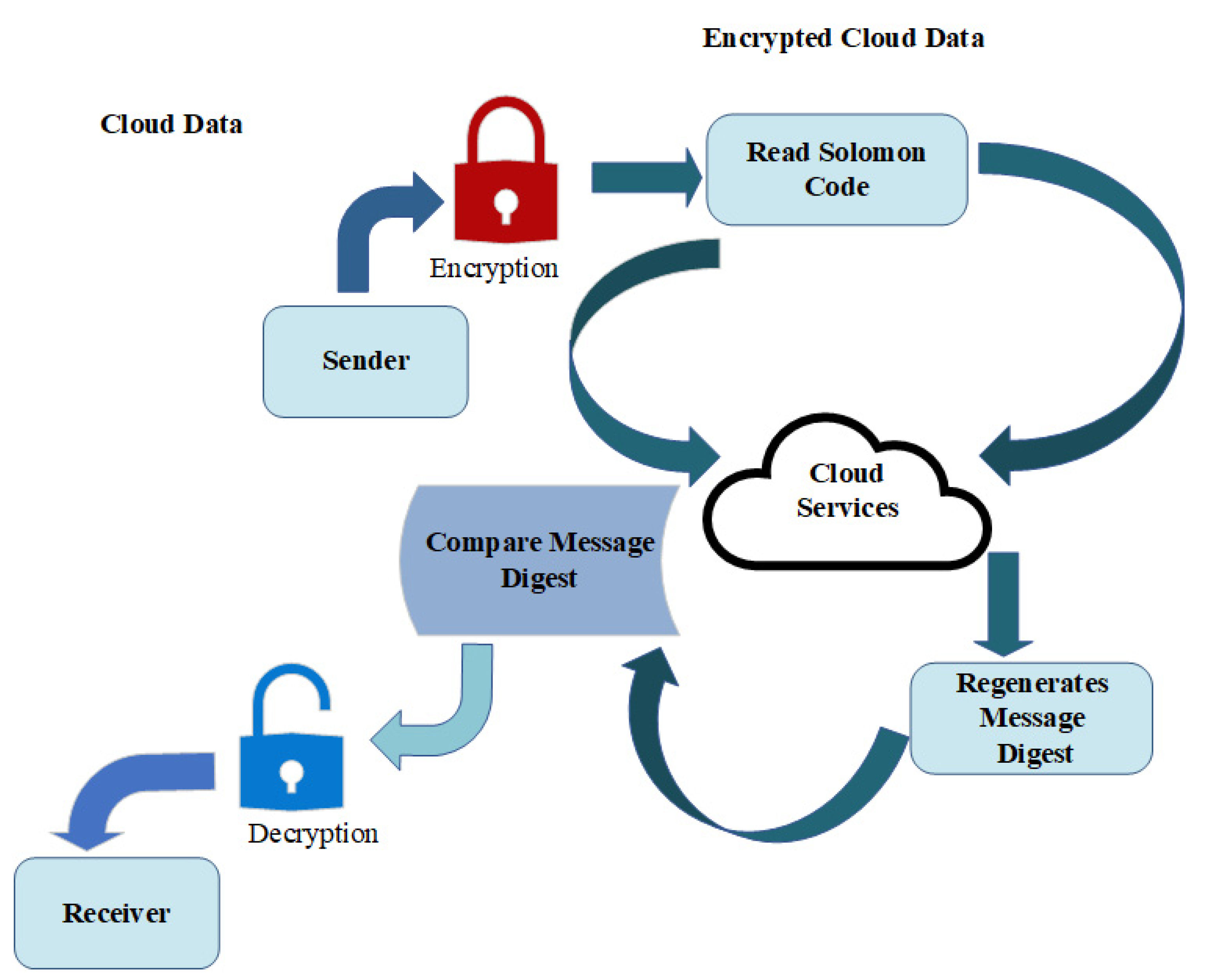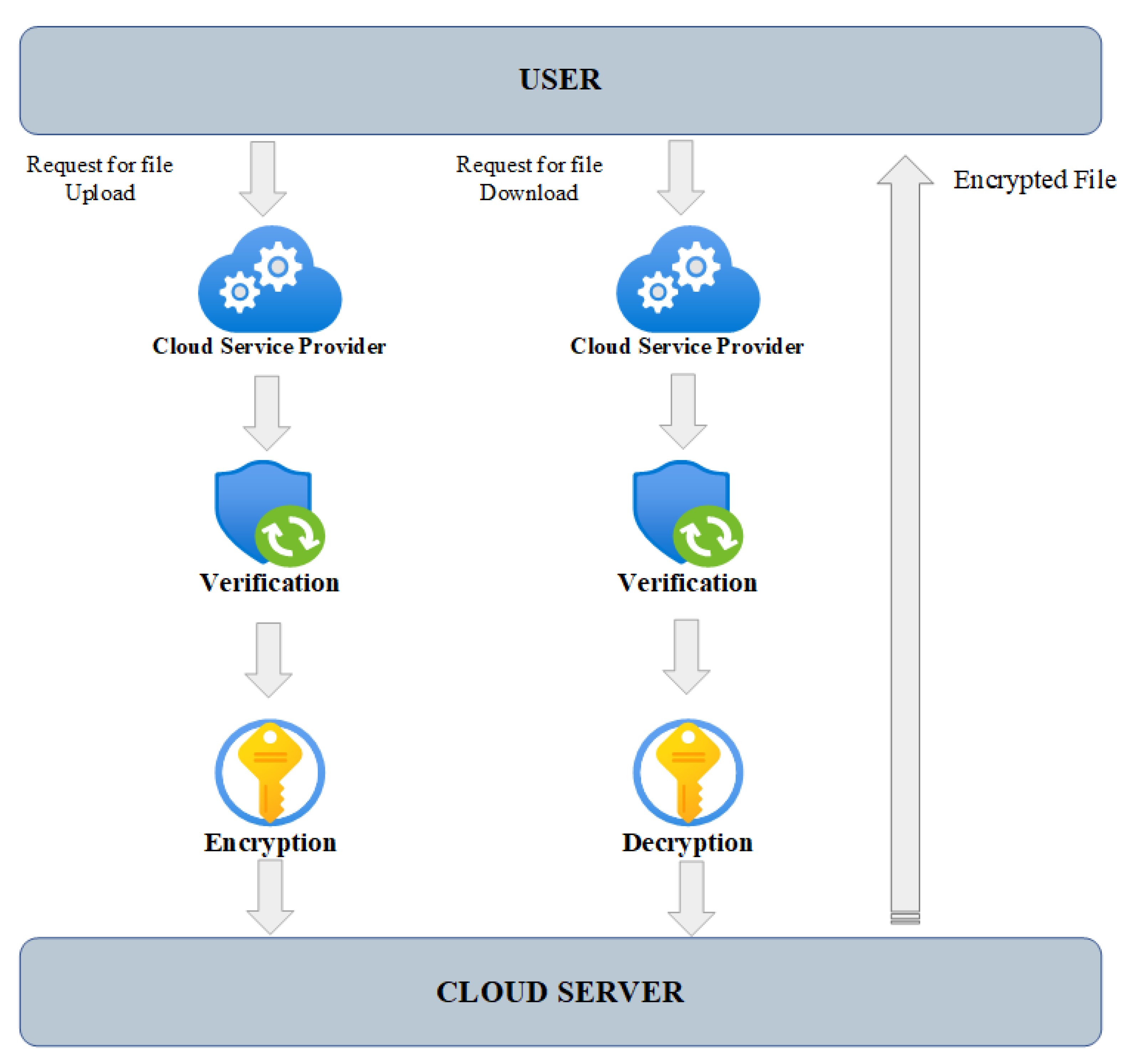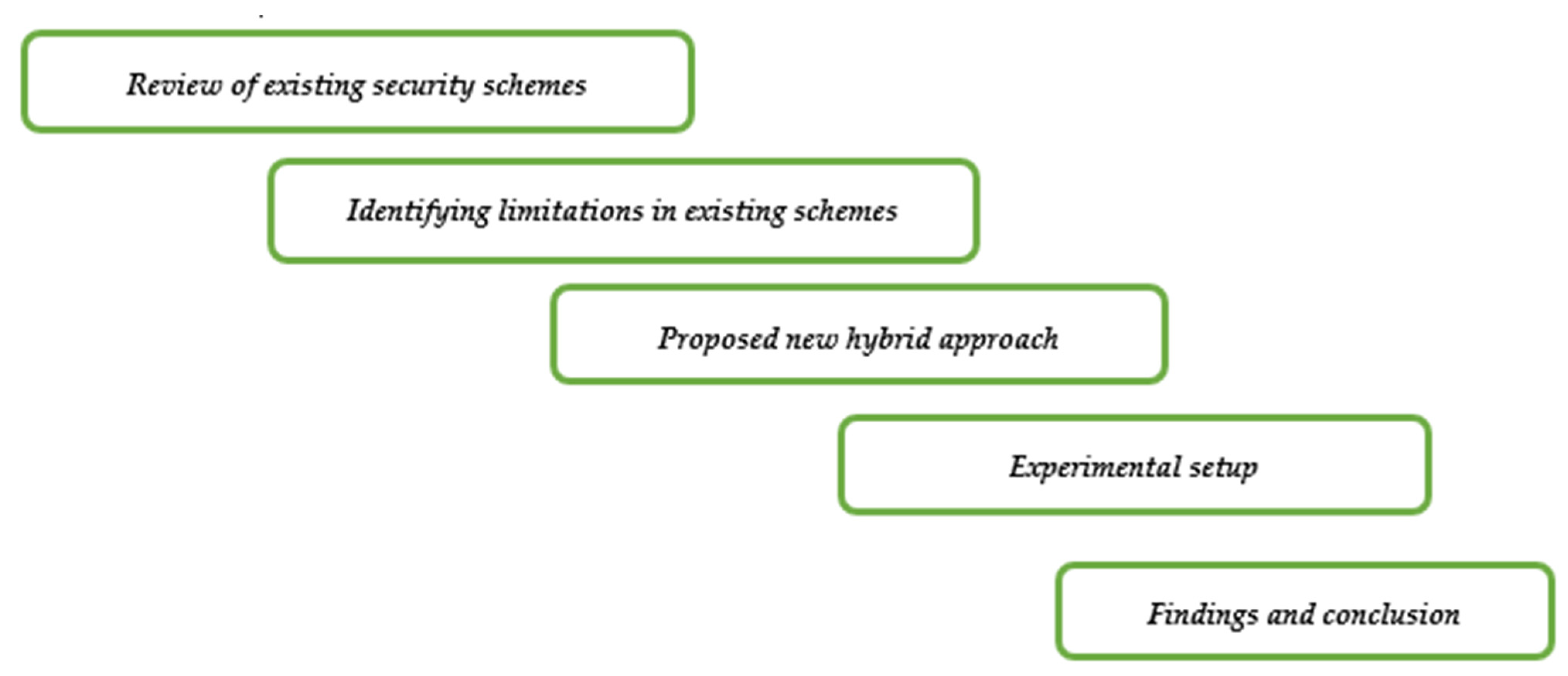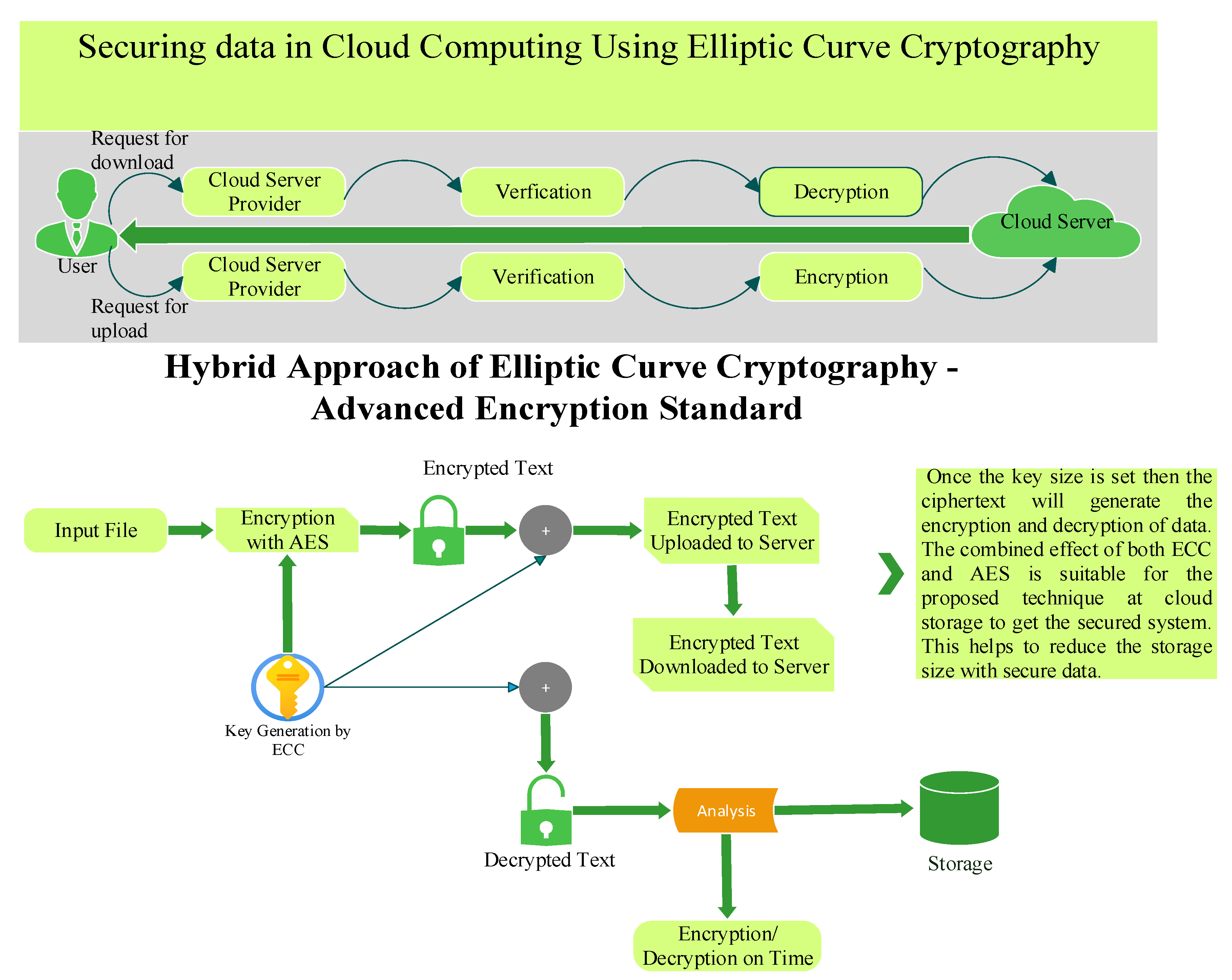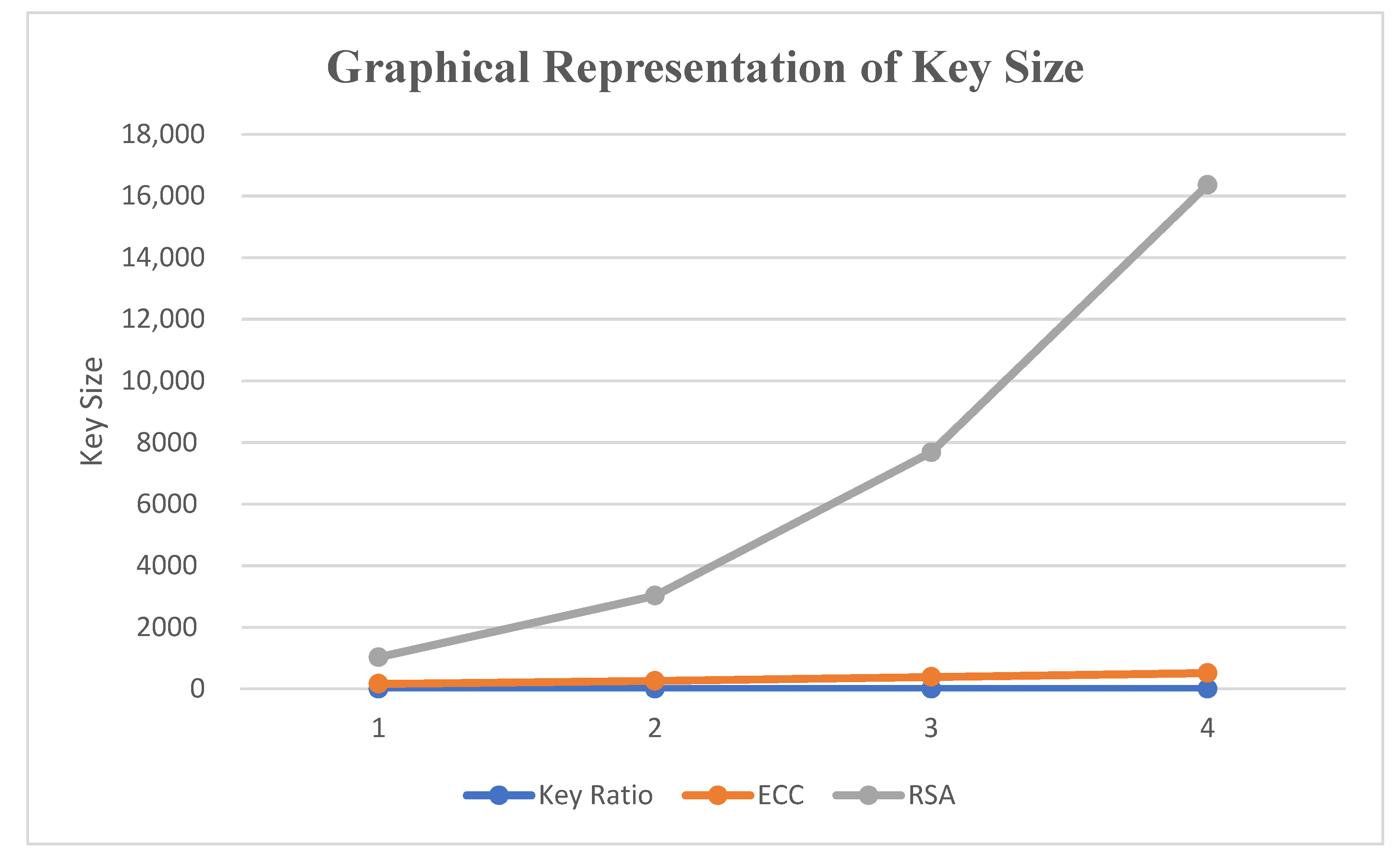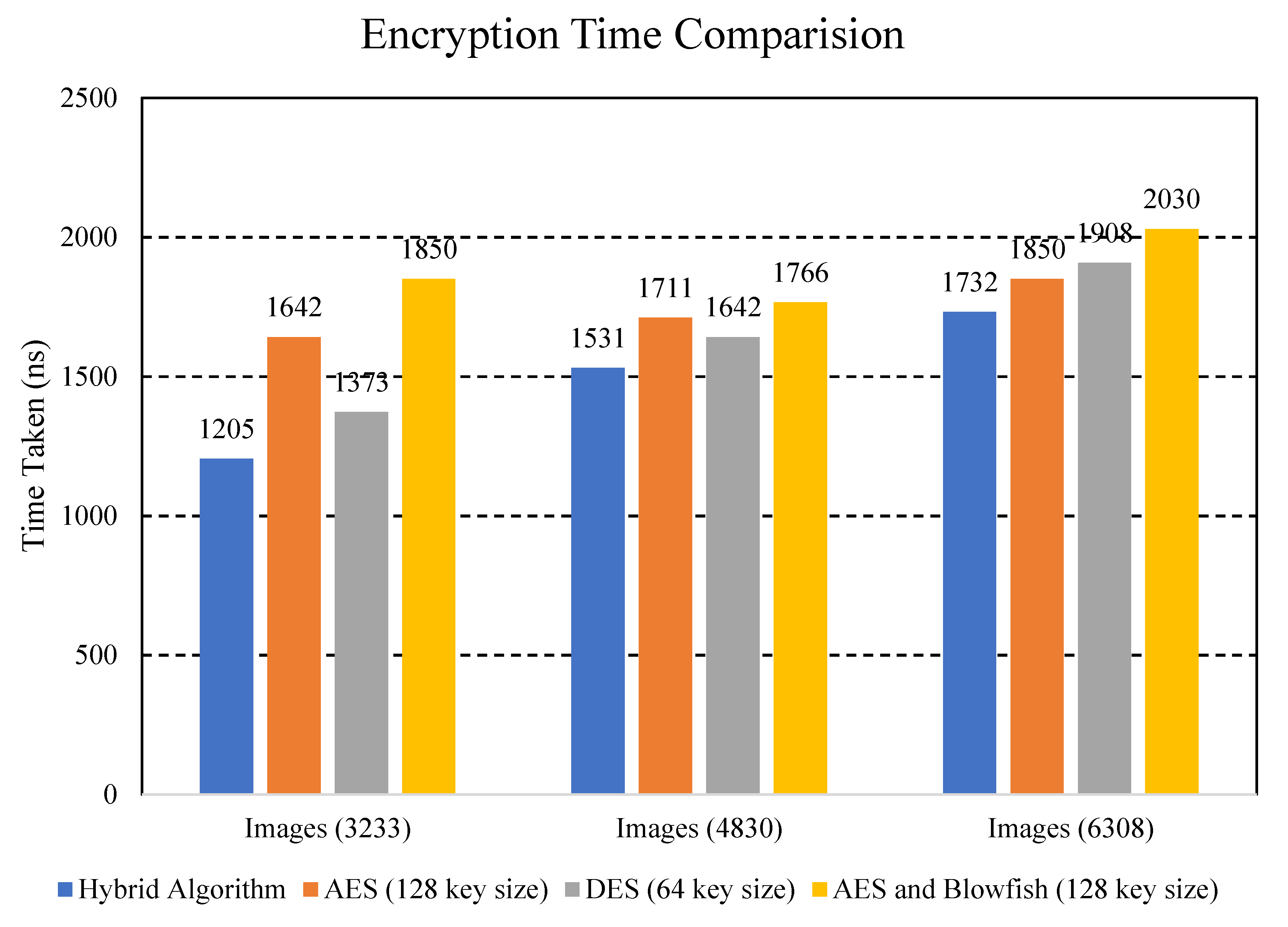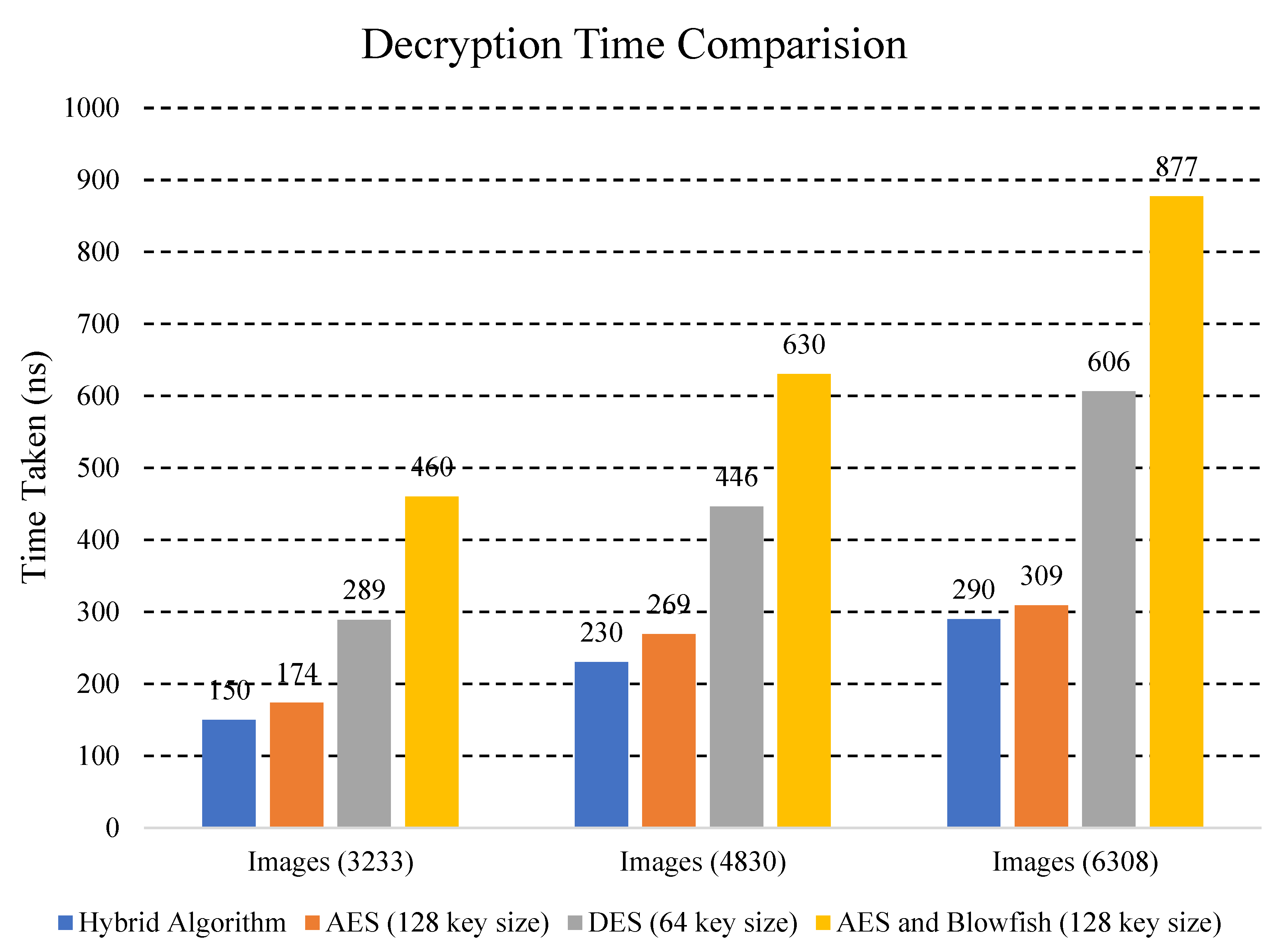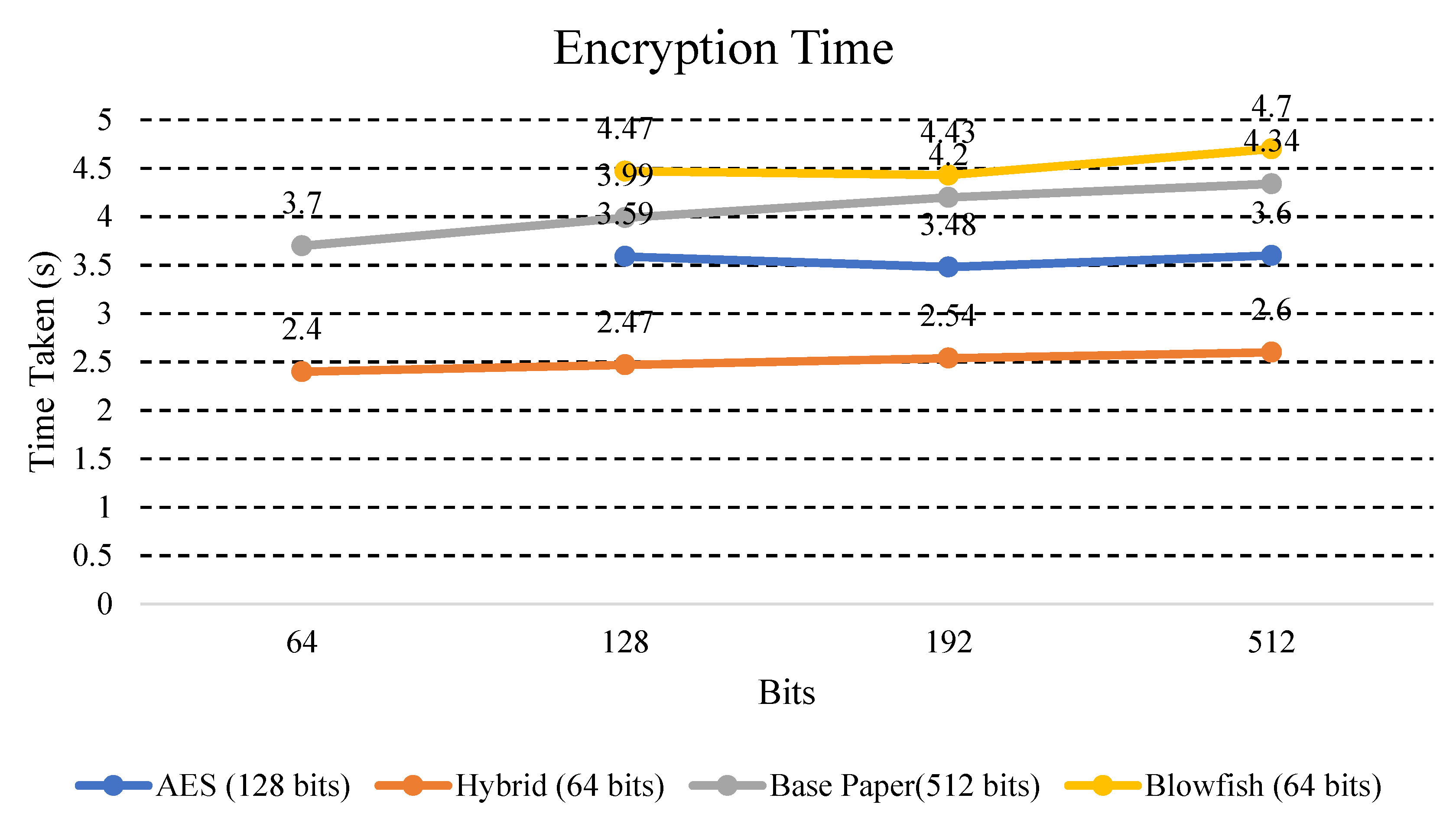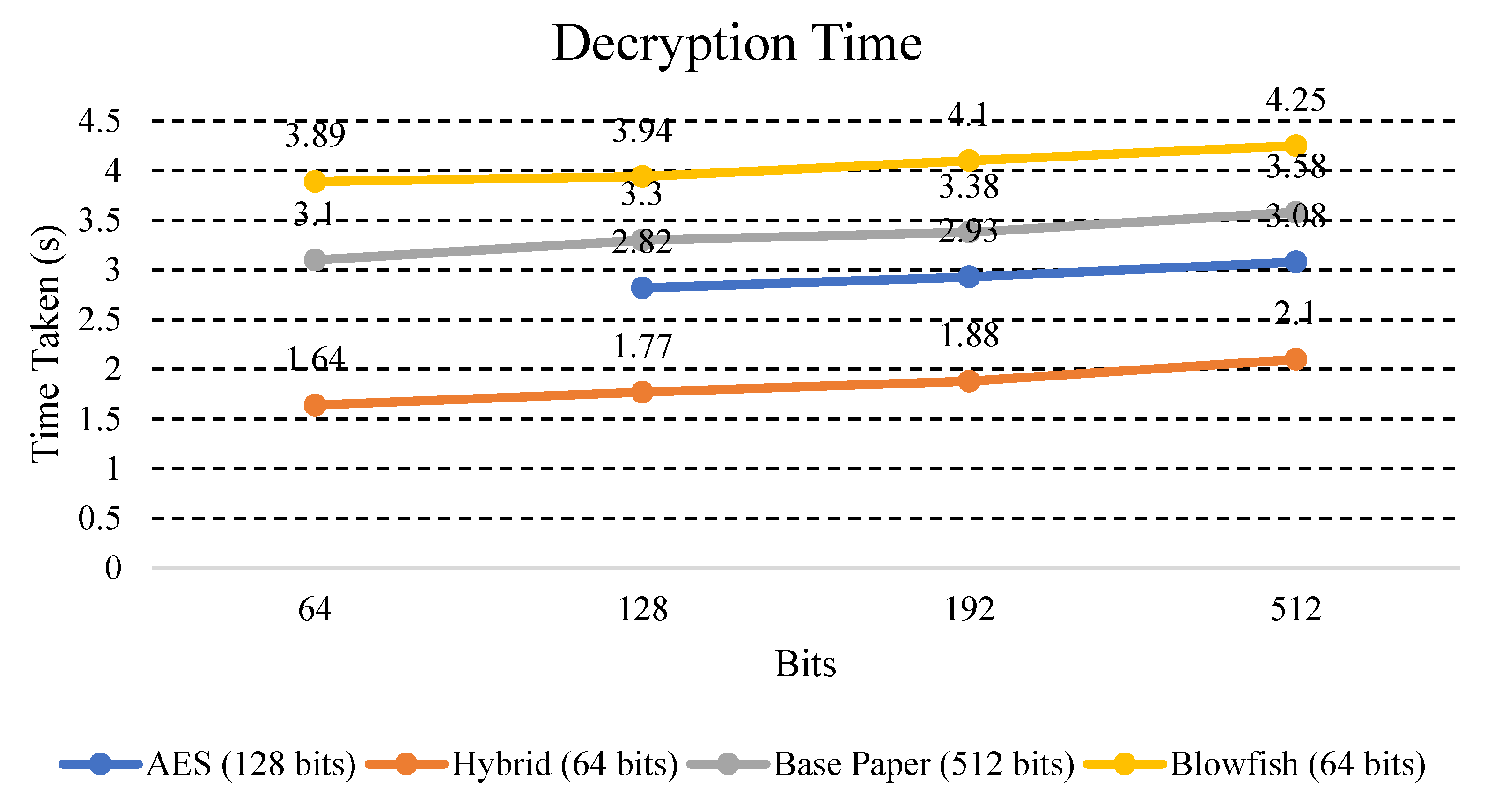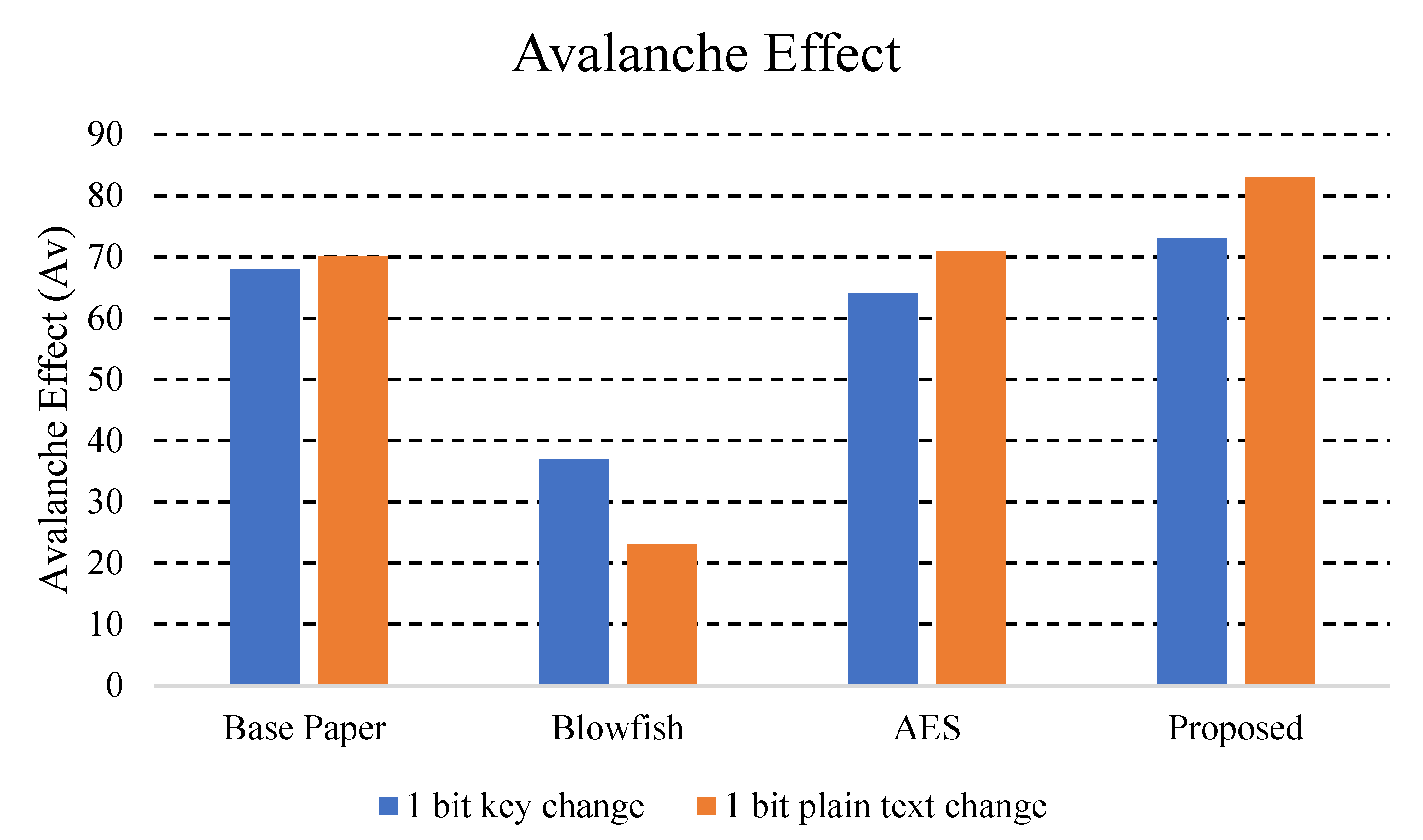1. Introduction
Cloud computing has been one of many distinguished computing models that provides numerous services irrespective of the location and medium, easily accessible at any location, such as unlimited database storage, networks and communications, and others. Its attractive features have led to an ever-increasing reliance on the cloud, leading to a massive volume of data and raising privacy and security concerns. Significant drawbacks of cloud services, especially data security and data breaching, could be originated by cloud users either intentionally or unintentionally. Therefore, restrictions on data access should be applied to unauthenticated and unauthorized sources. Devices can also be a source of data breaching since users may be allowed to reuse the APIs and data, causing data loss. Hence, cryptographic methods are primarily employed to secure the data over the cloud by applying encryption/decryption techniques with the help of different keys. The two types of techniques that are used for the encryption of data with the help of keys are [
1]:
Asymmetric key encryption is also known as public-key cryptography. It contains a pair of keys, i.e., public and private keys for encryption and decryption of the message, respectively. However, symmetric key encryption is also used for the security of the data, where data are encrypted with the help of a single private key and then decrypted. The private key is used to encrypt the message and avoid the various activity of the hackers. It has been identified that the difficulty in adopting the symmetric cryptographic algorithms stems from the key size which needs to be large enough to ensure proper security. List of abbreviations used in this paper are shown in
Table 1.
Advanced Encryption Standard (AES) is based on the symmetric key encryption algorithm [
2], which was developed for the replacement of Data Encryption Standard (DES) and is much faster than the DES because it contains 128-bit key size whereas DES contains 64-bit key size. Accordingly, Elliptic Curve Cryptography (ECC) is based on asymmetric key encryption [
3], and it outperforms other cryptographic methods with its primary feature of providing higher security with smaller key size compared to other existing schemes like the Rivest–Shamir–Adleman (RSA) algorithm [
2], which is based on asymmetric cryptography algorithm leading to smaller latency and lesser computational/hardware complexities.
Using AES along with ECC was proposed by Chen et al. [
4], who used AES with ECC for increasing the system security. However, they also used Shamir secret sharing key for the transfer of data. In this paper, we proposed a hybrid model of AES and ECC for the security of data over cloud storage without involving a third party. The proposed hybrid model (AES-ECC) is used to maintain the security of the system over cloud storage efficiently. The main reason for using this hybrid approach is to reduce the key size of the data while maintaining the security of the system in less time. Although many authentication methods exist, computational cost and time is not reduced.
Cloud computing provides efficient services for the storage of data on the remote server. In general, it provides three services which are used at different levels and different purposes [
3]:
SAAS (Software as a service) ≥ End Users
PAAS (Platform as a service) ≥ Application Developers
IAAS (Infrastructure as a service) ≥ Network Architects
However, different cloud systems are classified in different deployment models which are as follows [
5]:
Public cloud service (For all)
Private cloud service (For the encryption purpose and security)
Hybrid cloud service (Both as a mixture of public and private cloud systems)
Community cloud service (Specifically for the communities)
1.1. Cloud Computing Characteristics
Cloud computing is a promising technology which helps organizations expand and safely transfer data from physical locations to the ‘cloud’ server that can be accessed from anywhere at any time. Different characteristics of cloud computing provides services to the users irrespective of their type but depend on their work. Some of the characteristics are [
6]:
1.1.1. Network Access
The network is accessible easily to every user that there will be no difficulty for the users to access their data at any place or any machine.
1.1.2. Expeditious Elasticity
User friendly and elastic in manner. It allows cloud storage as per the need of every user.
1.1.3. Self Service on Demand
Self-services are provided by cloud computing as many of them are provided without the consent of the service provider.
1.1.4. Pooling Resources
Redistribution and allocation of resources are dependent on the user’s need in a unique manner
1.1.5. Managed and Measured Services
Services are controlled by the service providers like the arrangement of data and security management of the cloud storage for each user.
Figure 1 represents the services mainly provided by cloud computing.
1.2. Cryptographic Cloud Services
Recent enhancements in cloud storage have provided different services to the users to get the encryption and decryption of data done in an experienced manner without the involvement of a third party. This enhances the system for increasing the security of the system as well as the efficiency of the storage for secure accessibility and fast retrieval of data. The sharing of cloud resources by different types of users can be easily done through this service and enhance the capability of the system by securing more storage after the implementation of the cryptographic techniques [
7].
Figure 2 presents the different forms of the cloud storage services. It can be seen that the data between sender and receiver are being encrypted and decrypted and stored at the cloud server. It also represents the secure transmission of data over the cloud storage.
1.3. Elliptic Curve Cryptography (Cloud Computing Service)
Efficient types of cloud services are provided in the form ECC which is used for the encryption and decryption of data. These services use asymmetric encryption and decryption of data. It is more efficient than others as it uses the RSA encryption and decryption of data; the key size is lower compared to the symmetric encryption and decryption of data. For example, if the size of the data for the key is 1020 bits, it will be reduced to 163 bits by using the RSA scheme in ECC. Moreover, ECC is more appropriate for network access using smartphones. Many hackers are in a hurry to breach the user’s personal information or some data to blackmail them. That is why ECC is specifically made for users who are accessing their data with least secured devices that can be easily hacked [
8].
Figure 3 represents the user and data stored on cloud server; it shows the process of how a user request of data has been processed at the server and how the data are being accessed securely.
1.4. Problem Statement
Currently, the security of data is a major issue which can be compromised in different ways using either external or internal means. To protect the transmission of data over the Internet, different encryption techniques are used. The problem with these techniques is that they need large key size, large memory size, and require a lot of computation power to protect the data. As in AES encryption, a key is generated soon after the input file is uploaded, and we know AES uses symmetric key encryption method in which a single key is used for encryption as well as decryption. Hence, if the single key is known by the third party, then the input file will easily be decrypted and again encrypted so that the user does not know that the input file has been read by someone else. Although AES is one of the secure algorithms, its security can be compromised by knowing the single key. On the other hand, ECC uses asymmetric key encryption in which there are two keys for encryption and decryption, public and private key, respectively. This is the reason that its security level is higher, and it is not easy for hackers to crack both keys at once. ECC is also mainly known for its smaller key size. ECC can provide the same security level as compared to other algorithms in a smaller key size. There is a need to develop a system which provides the security of the data over the cloud with less computational cost and less time for the encryption/decryption process. We combine the properties of both algorithms and utilize them in our proposed model.
1.5. Contributions
The following are the main contributions of this paper:
- ❖
We propose a hybrid model by combining two algorithms AES and ECC, in which key generation of AES is done with the help of ECC. In simple words, we are not using the key generated by the AES algorithm; ECC is used for generating the key so that its key size is reduced.
- ❖
As in symmetric/asymmetric encryption, a public key or private key is used for encryption and decryption of data. Thus, this process needs a large key size and requires a lot of computational power. The proposed hybrid algorithm (AES-ECC) is used to enhance the security of system in less time by solving the problem of key size and it helps to reduce the computational power for memory optimization.
- ❖
We also present an algorithm for our proposed framework which describes how the public key is generated using ECC algorithm and how encryption/decryption is done using AES.
The remaining sections of this paper are organized as follows.
Section 2 provides the related studies. In
Section 3, the research methodology is explained in detail. The proposed hybrid AES-ECC model is presented in
Section 4 and
Section 5 is about experimental results and discussions. In
Section 6, the conclusion of the work is presented.
2. Related Work
Cloud storage is gaining popularity day by day due to its synchronous resource sharing among all users. Data owners prefer cloud storage over other services due to its access-all time nature. For this purpose, data integrity and data preservation should be verified in order to increase security of the system.
In ref. [
1], AES along with ECC is proposed for increasing security of the system. Shamir secret sharing is used for distributing and managing the system without the trusted center. Although the proposed combined approach increases system security, it still takes huge computational cost as well as taking much time.
AES, DES, and Blowfish methods are used along with the proposed method which uses the relatable algorithms for secure cloud services [
2]. These algorithms provide efficiency and integrity to the data storage to avoid conflict among bulk users and secure the data of each user separately. Moreover, data accessibility is expeditious and managed appropriately by the service provider. The avalanche impact of plain text and data block size is also measured by the cloud computing data services.
In paper [
3] by Madhavi et al., the security strength of ECC and RSA are combined by using the data over 264 bits while 256 bits of data follow the guidelines of NIST. This working of algorithms shows that the ECC works more effectively as compared to the RSA algorithm as it provides more secure services over reduced data size and contains less storage for the accessibility of data. Experimentation can be done on different platforms of JAVA.
ECC is used for the encryption and decryption of data to provide secure and efficient services to different users [
4,
9]. The encryption and decryption of data are done in the layered method comprising of two sections. The first section contains the small sections for the addition of the bits for the data encryption process and reduces the size of the keys for efficient accessibility. Meanwhile, the second layer consists of a partition of the elliptical curves which are used for the encryption of data such as
P0,
P1,
P2,
P3,
P4…
Pn. These steps are used for the encryption and decryption process and these two layers provide the security of the data. In the previous techniques, data losses and security issues arise. To overcome the effect of these issues, ECC is used to secure the data and avoid the breakdown of the data for unethical reasons. In this asymmetric technique of cryptography, data security and enhancement of larger datasets can be done easily to provide security services most readily. ECC simultaneously provides the two operations to access and secure the data over cloud computing.
Polynomial-based hashing elliptical curve cryptography (PHECC) is proposed in [
10], which has the implementation of polynomial-based hashing elliptical curve cryptography by using the hybrid algorithm of cloud computing service. This technique ensures the supportive following and usage of clients/users by using the service. Cloud data security can benefit from the hybrid cloud algorithm which is suitable for the current situation and provides high security. The polynomial-based hashing along with the elliptical curve following the hybrid algorithm has provided essential security measures to both the system and the users for enhanced and efficient services. The integrity of data is maintained through this technique as data are encrypted and decrypted; once it uploads to the cloud, a specific hash value is assigned using PHECC. Data are encrypted and decrypted in PHECC using the elliptical curve while the hash value is generated by polynomial hashing and hybrid algorithms. Thus, the integrity of data over cloud services for uploading and downloading is achieved.
Hybrid algorithms for RSS and ECC are used in paper [
11]. Once the data are reduced, some elements which are signature are assigned to the elliptical curve authorities for the signing and digestion of the message. Sometimes, the encrypted data is used for this purpose by ECC. The encryption and encryption process are done in the same manner. Hybrid algorithms for RSS and ECC analysis are done based on their excellence.
Data encryption and decryption over the transmission are secured through different mediums [
12]. The confidentiality, integrity, and integrity of the data are mentioned in that paper. The technology used for the authentication and confidentiality of the data is the Irondale encryption algorithm with the EAP-CHAP for the usage of cloud computing services over the internet.
Authentication of data is important in different latest devices such as IoT devices. High-capacity data with more confidential information is stored in these storage spaces, which is why authentication is important with these devices. Processor power must be high to perform the cryptographic operations on that device. Clouds are used by these devices to achieve the authentication of data and execution of protocols [
13,
14].
A model was made for the smart grid named the wide area measurement system key management proposed by Yee Wei Law et al. [
15]. For the secure communication of data and authentication with different devices to implement the protocols, public key infrastructure is used. The problem can be solved by the traditional public key infrastructure also.
Storage cloud is IaaS that gives buyer associations an adequate degree of adaptability and flexibility in utilizing the virtualized climate for its storage requirements. IaaS is the essential level for different models and administrations. The other two categories of installment are factors and ward on the measure of capacity limit required and the data transmission required. In the vast majority of the cases, the first prerequisite, which is the capacity limit, has various classes of installments that are reliant upon the limit. As such, the expense of 1 GB when the entire prerequisite does not surpass 1 TB is not the same as the expense of 1 GB when the complete necessity surpasses 1 TB [
16,
17].
Security and protection privacy [
18,
19] are a vital challenge for cloud computing services. Since the CSP is a non-confided in outsider, we cannot store crude information without encryption in view of secrecy issues. In the proposed work, a solid information transmission and capacity in cloud by the help of cross breed cryptosystem is talked about. The AES and ECC are applied at the same time to enhance the trustworthiness and classification of the framework, by which we can apply both symmetric and deviated encryption to add more security to the cloud information. Accordingly, the expected model manages a well-organized AES- and ECC-based encryption strategy, which is safer and has more computational power.
Paper [
20,
21] introduced the capacities of cryptography in terms of giving security in distributed storage. This was done by exploring the normal cryptography techniques including AES, ECC, and RSA. In any case, with respect to the variations in the exhibition of these procedures, this study resolved the issue of recognizing an effective and secure encryption technique. Some encryption methods can ensure security, yet they take quite a while for encryption and decryption. In the other way around, different strategies might give an efficient encryption, yet they experience the ill effects of the need for security.
The author [
22] introduced a configuration that depends on different key parts that allow the security model to put away and share touchy information utilizing public cloud innovation. AES with a 256-bit encryption decoding motor is utilized to scramble the information that will be transferred on the cloud. AES has conveyed incredible outcomes for scrambling mass information at high paces. Steganography measures are utilized for information security. Steganography stores delicate information inside other information, in this way expanding the information size to be put away on cloud. These result in increment transfer speed and cloud diminish capacity use, which is not practical.
8-bit ECC processor possesses just 11 cuts used in [
23,
24]. A review on the duplication strategies were done, from which Karatsuba, Stall, and Montgomery’s particular increase techniques were observed to be effective. The investigation of the three augmentation techniques was performed and among the three increase strategies, Karatsuba duplication was picked as a space-effective duplication strategy. The Karatsuba augmentation strategy possesses a smaller number of cuts in contrast with other strategies. It will be helpful in decreasing for higher request bits since lower request bits as of now involve a smaller number of cuts.
Paper [
25,
26,
27] introduced a two-level cryptographic procedure and a model for the improvement of information security in cloud processing. The model utilizes both symmetric and uneven encryption calculation (AES and ECC) to improve the security of information against intruders, denying them from approaching the genuine information, thus empowering privacy, respectability of the information, and time taken to perform cryptographic tasks, and further developing the trust level of clients in cloud computing and speeding up the utilization of more modest keys of ECC in the cryptographic interaction.
Table 2 represents the comparative analysis of related work in detail of papers [
1,
2,
3,
4,
5,
6,
7,
8,
9,
10,
11,
12,
13,].
Different levels of security and threats are discussed by different authors [
5] based on the services which are discussed below in
Table 3.
Different levels of security, attacks and their impact on system can be seen in
Table 4.
